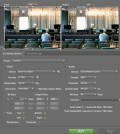Virtual Classrooms: 5 Attributes You Need for Successful Online Learning

Every college is approaching school differently this fall, with some starting fully remote, some implementing the HyFlex model and others bringing all students back to campus with social distancing measures in place. But with reports of COVID-19 already flaring up where schools have opened, colleges with any level of in-person instruction need to be prepared to switch to virtual learning quickly if needed.
When done well, virtual learning engages students with high-quality education. In order to work, however, virtual class experiences need to be carefully planned. Here are the five attributes all successful virtual classrooms share.
Shorter class
Last semester, many educators held live, long-form Zoom lectures online, similar to the traditional in-classroom lecture format. Unfortunately, there’s no proof as to whether these long lectures are effective in virtual classrooms.
Gen Z students, who were born between 1995 and 2010, learn differently than any previous generation. A LinkedIn Learning survey found that Gen Z students prefer bite-size learning and seek instant gratification. Therefore, it’s fair to assume that the longer educators try to hold Gen Z students’ attention, the less effective their online courses are likely to be. Instructors can work with this aspect of Gen Z attention spans by offering more frequent but shorter online class periods, or by providing “bite-sized” digital content that students can watch at their own pace.
Content variety
According to Inside Higher Ed, courses that used more best practices for remote learning this spring resulted in higher student satisfaction. These instructional practices included things like live discussions sessions, videos from external sources, personal messages from the instructor and group projects.
To keep students engaged, educators should provide different forms of mixed media as a part of their classes. For example, a professor might build a class session with a short introductory lecture followed by supporting videos and small group breakout discussions. The combination of media will keep students engaged more than a single long-form talk. It also offers opportunities for educators to incorporate multiple viewpoints, such as by sharing videos from other experts in the field or creating videos featuring discussion between multiple professors in the department.
The more interactive the class is, the better it will be at capturing and keeping student attention. Be creative and try different strategies for keeping student attention, and ask for student feedback to improve future offerings. Consider offering a class forum in which students can interact, discuss class topics and ask questions. Create mobile quizzes to assess the performance of mixed media classes and where students may need further review.
Online engagement
Forty-three percent of Gen Z students prefer an independent approach to learning. They are more likely to prioritize learning if they have the flexibility to fit online courses into their schedule rather than planning their day around a fixed class time.
Technology allows educators to monitor students’ progress, so giving students this freedom to learn at their own pace is easier than ever before. For example, a professor can assign online readings or video clips, paired with quizzes where students must demonstrate understanding. By monitoring both engagement with class videos and quiz scores, instructors can gauge student involvement and understanding. Depending on class progress, instructors can then decide if the entire class needs additional materials in a given area, or if a given student may need one-on-one support.
Mobile friendly
In addition to online engagement, colleges should also offer mobile learning opportunities. Gen Z students report spending much of their time on mobile devices completing homework and conducting research — more than the time they use those same devices for browsing social media, watching videos for fun or playing games.
Colleges should work with, not against, the mobile-first trend. Embrace student’s reliance on mobile technologies by creating content meant for mobile, like five-minute micro-quizzes and snackable video content.
Fun
This year has been stressful for students and teachers alike. With so much uncertainty, it will be easy for students to drift away from remote courses. To keep students coming back to class, make class an enjoyable, engaging experience. Build rapport in the class with discussion opportunities and chances for students to interact. Allow students to share resources that they found helpful or interesting in building their understanding beyond the assigned classwork. Try new ways of conveying information and respond to student feedback about what’s working for them.
Ensemble Video supports virtual classrooms
Ensemble Video is committed to ensuring every student has access to education. We support colleges across the country with virtual learning so every classroom can be up and running. Contact us today for a demo on how Ensemble Video can work for you.









You must be logged in to post a comment Login